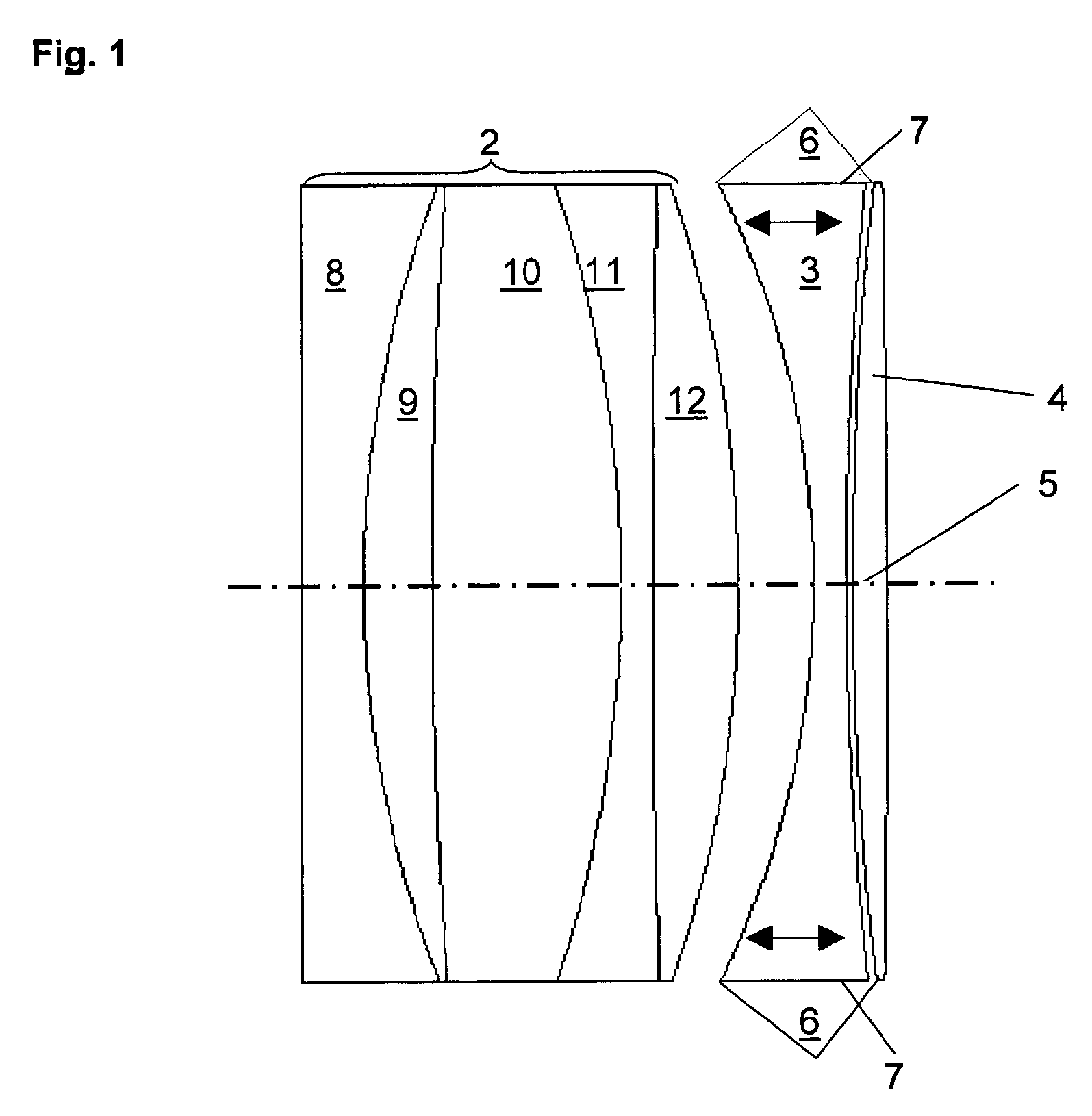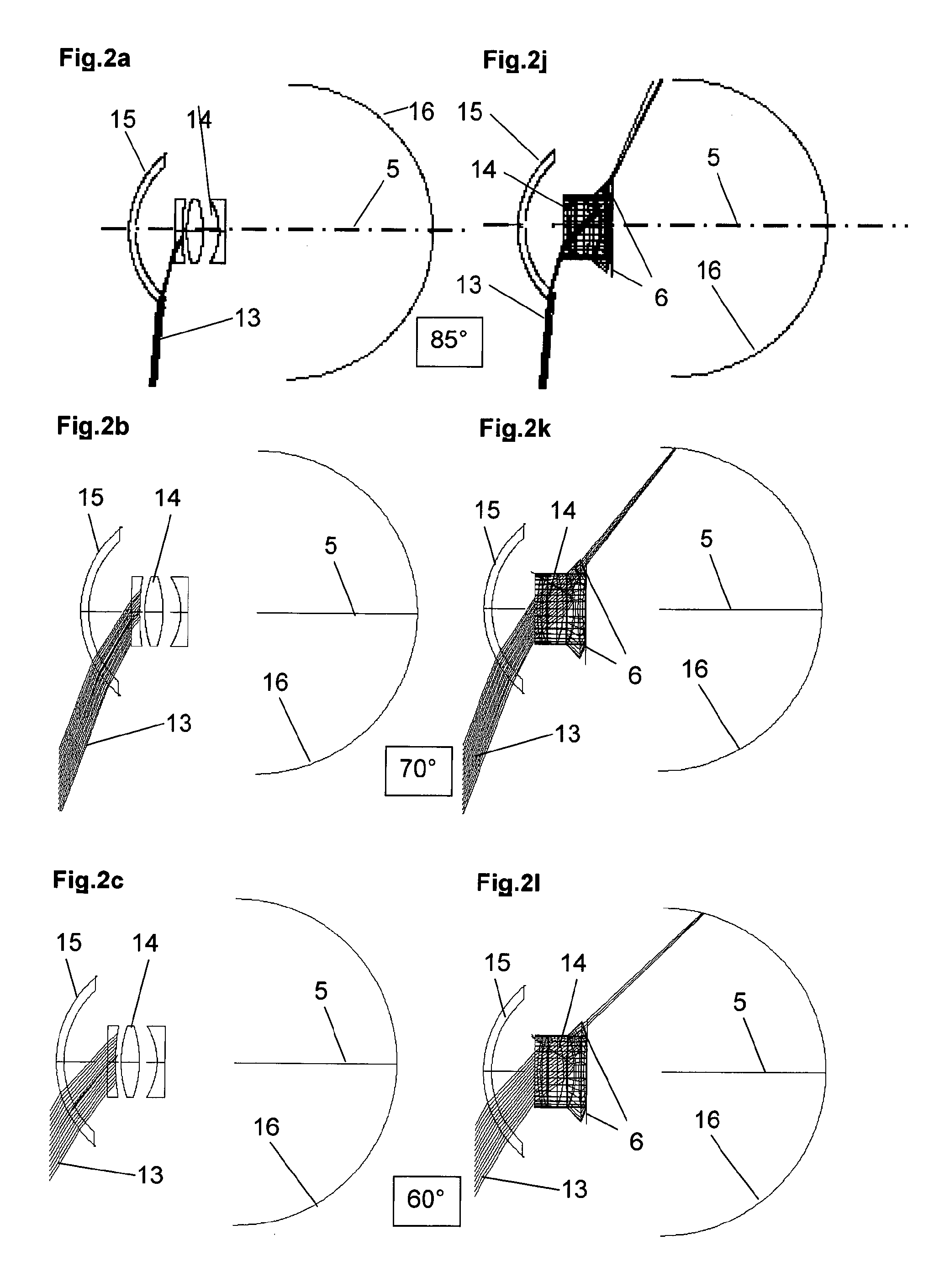Wide-angle optical unit for ophthalmological implants
a technology of optical units and ophthalmological implants, applied in the field of optical units and optical systems, can solve the problems of limited vision field of potential patients, severe impairment of peripheral vision of patients in vertical and horizontal directions, and inability to use conventional wide-angle systems and optical systems containing said wide-angle systems on their own
- Summary
- Abstract
- Description
- Claims
- Application Information
AI Technical Summary
Benefits of technology
Problems solved by technology
Method used
Image
Examples
Embodiment Construction
[0013]The wide-angle optical unit is a component of a preferably ophthalmological implant for restoring the accommodative ability. Said unit comprises an optical unit having a high angular acceptance, and a decoupling structure. Said unit does not necessarily comprise the optical adjustment mechanism of the accommodation system. Together with the optical adjustment mechanism and optionally separate emergent surfaces or emergent components, the wide-angle optical unit forms an optical system.
[0014]An embodiment of the invention provides a wide-angle optical unit for ophthalmological implants in the eye, which, owing to their design and structure, restrict the field of vision of the patient, such that said optical unit does not restrict sight in a central field of view and at the same time ensures the implant wearer has peripheral vision.
[0015]A wide-angle optical unit of an optical system for ophthalmological implants in the eye is provided herein according to one embodiment of the i...
PUM
 Login to View More
Login to View More Abstract
Description
Claims
Application Information
 Login to View More
Login to View More - R&D
- Intellectual Property
- Life Sciences
- Materials
- Tech Scout
- Unparalleled Data Quality
- Higher Quality Content
- 60% Fewer Hallucinations
Browse by: Latest US Patents, China's latest patents, Technical Efficacy Thesaurus, Application Domain, Technology Topic, Popular Technical Reports.
© 2025 PatSnap. All rights reserved.Legal|Privacy policy|Modern Slavery Act Transparency Statement|Sitemap|About US| Contact US: help@patsnap.com



